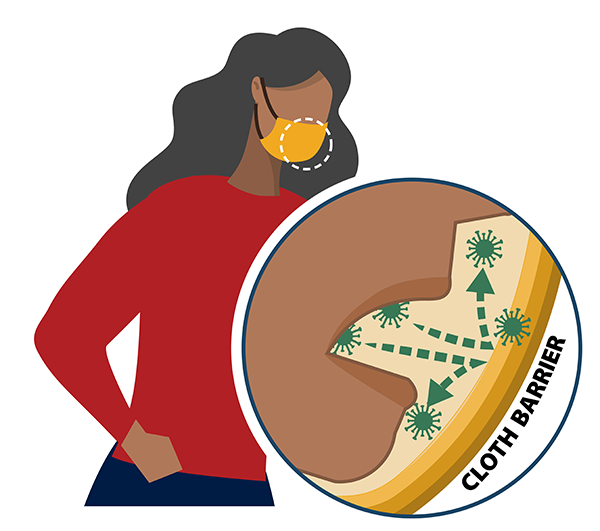As we can all see from the news and from our local neighborhoods, there is a resistance by many, to wear masks during this communicable infectious disease pandemic. I’m a physician, so as you can imagine, my lens is health related, not politics, not individual rights vs. community welfare, not economic, not philosophical.
What follows are the CDC recommendations and perspective, which I fully endorse. In addition, locales are making decisions both for and against mandatory public spaces mask wearing. My advice, no matter the local regulations/guidelines…wearing masks out in public….has, does and will make a difference for individuals, their loved ones, and all in the community.
Here we go, taken directly from the CDC:
- The CDC recommends that people wear cloth face coverings in public settings and when around people outside of their household, especially when other social distancing measures are difficult to maintain.
- Cloth face coverings may help prevent people who have COVID-19 from spreading the virus to others. (And remember, most of us who have it, don’t know we have it).
- Cloth face coverings are most likely to reduce the spread of COVID-19 when they are widely used by people in public settings.
- Cloth face coverings should NOT be worn by children under the age of 2 or anyone who has trouble breathing, is unconscious, incapacitated, or otherwise unable to remove the mask without assistance.
Evidence for Effectiveness of Cloth Face Coverings
Cloth face coverings are recommended as a simple barrier to help prevent respiratory droplets from traveling into the air and onto other people when the person wearing the cloth face covering coughs, sneezes, talks, or raises their voice. This is called source control. This recommendation is based on what we know about the role respiratory droplets play in the spread of the virus that causes COVID-19, paired with emerging evidence from clinical and laboratory studies that shows cloth face coverings reduce the spray of droplets when worn over the nose and mouth. COVID-19 spreads mainly among people who are in close contact with one another (within about 6 feet), so the use of cloth face coverings is particularly important in settings where people are close to each other or where social distancing is difficult to maintain.
Who Should Wear A Cloth Face Covering?
General public
- CDC recommends all people 2 years of age and older wear a cloth face covering in public settings and when around people outside of their household, especially when other social distancing measures are difficult to maintain.
- COVID-19 can be spread by people who do not have symptoms and do not know that they are infected. That’s why it’s important for everyone to wear cloth face coverings in public settings and practice social distancing (staying at least 6 feet away from other people).
- While cloth face coverings are strongly encouraged to reduce the spread of COVID-19, CDC recognizes there are specific instances when wearing a cloth face covering may not be feasible. In these instances, adaptations and alternatives should be considered whenever possible (see below for examples).
People who know or think they might have COVID-19
- If you are sick with COVID-19 or think you might have COVID-19, do not visit public areas. Stay home except to get medical care. As much as possible stay in a specific room and away from other people and pets in your home. If you need to be around other people or animals, wear a cloth face covering (including in your home).
- The cloth face covering helps prevent a person who is sick from spreading the virus to others. It helps keep respiratory droplets contained and from reaching other people.
Caregivers of people with COVID-19
- Those caring for someone who is sick with COVID-19 at home or in a non-healthcare setting may also wear a cloth face covering. However, the protective effects—how well the cloth face covering protects healthy people from breathing in the virus—are unknown. To prevent getting sick, caregivers should also continue to practice everyday preventive actions: avoid close contact as much as possible, clean hands often; avoid touching your eyes, nose, and mouth with unwashed hands; and frequently clean and disinfect surfaces.
Who Should Not Wear a Cloth Face Covering
Cloth face coverings should not be worn by:
- Children younger than 2 years old
- Anyone who has trouble breathing
- Anyone who is unconscious, incapacitated, or otherwise unable to remove the cloth face covering without assistance
Summary: Let’s do this… Let’s get maskable!!! Please…………

